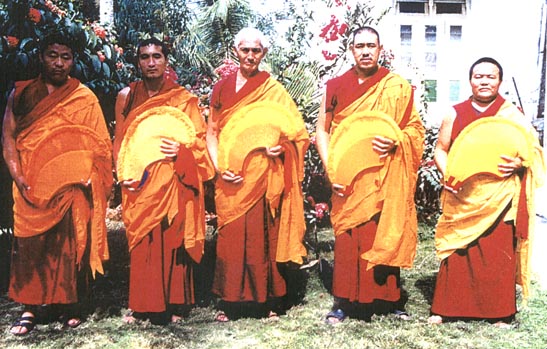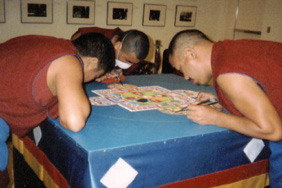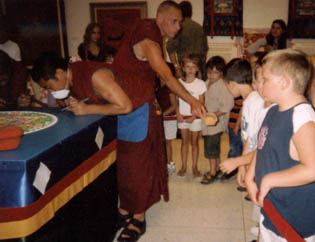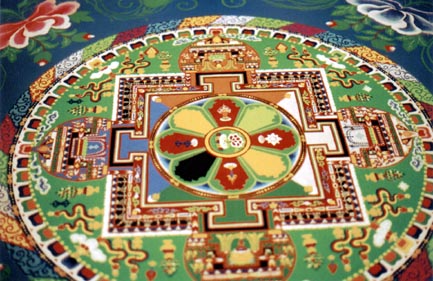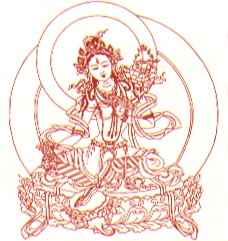
The monks of Gaden Lhopa have completed the seven foot sand mandala at the Los Angeles County Art Museum. The dissolution of this mandala occurred on January 4, 2004.
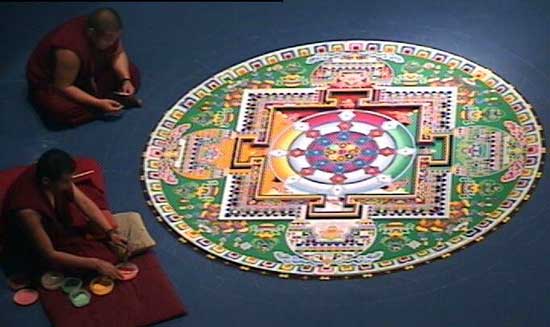
|
From September 3 through September 7, 2003, six monks from the INSTITUTE OF HIGHER BUDDHIST STUDIES – GADEN SHARTSE LHOPA KHANGTSEN visited Sioux City, IA. They were here to raise money to feed the 200 monks in their house called Gaden Lhopa (part of GADEN SHARTSE MONASTERY now in exile in India). At the college, most of the monks are Tibetan refugees with some being very young and very old. The college strives to preserve Tibetan sacred arts, philosophy and practice. Unlike other educational centers of its kind, Gaden Shartse Lhopa does not receive any grants nor funds from any government body.
The monks on this tour are: The monks are on a fourteen month tour of the United States. They return to India in February of 2004. While in Sioux City they built a CHENREZIG sand mandala at Levitt Gallery at Eppley Auditorium on the Morningside College campus.
That first night they also performed at Colton Recital Hall at the Warren M. Lee Center for Fine Arts at USD in Vermillion, South Dakota.
[If you have pictures to share, please e-mail us.] Buddha – Prince Siddhartha became enlightened
under the banyan tree and became this. Buddhism – followers of the teachings of Buddha.
There is no one Buddhism. Chenrezig — The Buddha of compassion. Chenrezig practice is the main practice of the Dalai Lama. Geshe – Doctor of Divinity in Buddhist Philosophy; takes 20 years or more to attain Nirvana – literally means “extinction,
blowing out”. This is the goal of spiritual practice Sand Mandala — unique and labor intensive, these mandalas are made of colored sand, ground brick, flowers, and charcoal. The colors are chosen to match the color of one of the Buddhas of the five Buddha families. The sand must be poured very exactly. The sand is applied very precisely by means of vibrating a metal cone that is filled with the color sand and whose tip is removed. Finally, in upholding the principle that life is transient, the sand mandala is dissolved, swept up and either deposited in a river or given to participants. |
||


